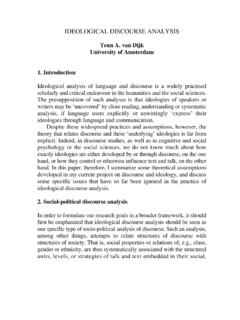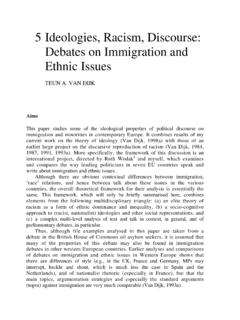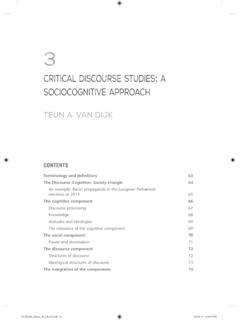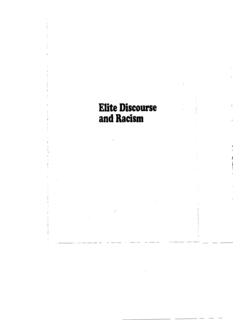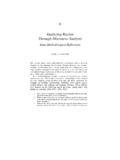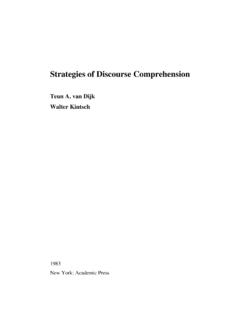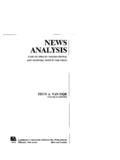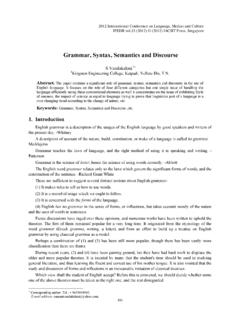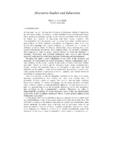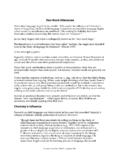Transcription of The study of discourse - Discourse in Society
1 Editor s Introduction: The study of Discourse : An Introduction The Emergence of a New Cross-Discipline In the mid-1960s, the humanities and the social sciences witnessed a remarkably synchronous paradigm shift with the birth of several new but mutually related interdisciplines such as semiotics, psycholinguistics, sociolinguistics, pragmatics as well as the study of Discourse . The articles collected in the volumes of this book are prominent contributions to the latter field of study , traditionally called Discourse Analysis, but more appropriately labeled Discourse Studies, because it is not limited to a method of analysis, as is the case for Content Analysis in the social sciences, but also has important theoretical objectives.
2 And because the study of Discourse manifests itself in virtually all disciplines in the humanities and social sciences, it is appropriate to speak of a new cross-discipline or even a trans-discipline . The story of this new field of study has been told many times, and is as exciting as the contributions it has made to our insights into language use, communication and social interaction. For some of the mother and sister disciplines, this story of the emergence of the study of Discourse may be summarized as follows. Anthropology Already in the early 1960s, among the first to recognize the relevance of the study of Discourse anthropologists such as Dell Hymes (1972) became interested in the ethnographic study of communicative events (beyond the traditional study of myths and folklore), a direction of research followed by many other anthropologists under the label of the ethnography of speaking (or the ethnography of communication ; Bauman & Sherzer, 1974; Saville-Troike, 1982) and then more broadly within linguistic anthropology (Duranti, 2001).
3 1 Linguistics Linguists were not lagging far behind during the late 1960s, when some of them realized that the use of language obviously was not reduced to the structures of isolated, abstract, invented sentences as was the case in structural and generative grammars but needed analyses of structures beyond the sentence and of whole texts , for instance to account for anaphora and coherence. Whereas initially still largely within the formal paradigm of text grammars , also this linguistic approach soon merged with the other approaches to a more empirical analysis of actual language use.
4 The names associated with these early attempts at text and Discourse grammars are J nos Pet fi (1971), Wolfgang Dressler (1972), and Teun A. van Dijk (1972, 1977), in Europe, and Joseph Grimes (1975), Tom Giv n (1979), Sandra Thompson and Bill Mann in the USA, the latter two under the label of Rhetorical Structure Theory (Mann & Thompson, 1988). The roots of the European text grammars, apart from the obvious influence of Noam Chomsky s generative grammar, are however diverse and range from literary theory and semiotics to Russian formalism and Czech and French structuralism. Although not under the label of text grammar , also early studies in Functional Systemic Grammar, founded by Michael Halliday in the UK (and then Australia), paid much attention to Discourse , for instance in the account of cohesion , the grammatical expression of semantic coherence (Halliday & Hasan, 1976).
5 This work was later followed by a large number of other studies on the grammatical and semiotic aspects of Discourse in the same SF-paradigm (among many other studies, see, , Martin, 1992). Formal Grammar On the other hand, increasingly formal and explicit studies of language use for Discourse participants, coreference, deictic expressions and tenses, continued to be engaged in, from the 1970s both by logicians and philosophers, such as Hans Kamp (1981) and his Discourse Representation Theory and others influenced by the mathematician and formal philosopher Richard Montague.
6 This approach states that Discourse semantics is dynamic and depends on context. Pragmatics Within the tradition of British analytical philosophy, the 1960s also saw the very successful birth of another new interdiscipline, namely pragmatics. Based on the work of Austin (1962) on How to Do Things with Words, it is especially the study of John Searle (1969) on speech acts and an influential essay of H. P. Grice (1975) on conversational maxims that sparked a flow of studies on language use extending the traditional focus on syntax and semantics with a pragmatic component, accounting for the illocutive functions of language in terms of speech acts, implicatures and other aspects of contextually based language use.
7 More generally, Pragmatics has become the discipline that houses many of the studies of language use beyond grammar, such as the influential work on politeness by Penelope Brown and Stephen Levinson (Brown & Levinson, 1987). Semiotics Within the study of literature and the arts, the mid-1960s also witnessed the emergence of semiotics, the general study of signs and symbol systems. Originally based on the work of philosopher Charles Sanders Peirce, and structural linguists such as Louis Hjelmslev and Andr Martinet, this new discipline became popular especially due to the work of Umberto Eco (1976) in Italy, and Roland Barthes (1964) and many others in France.
8 Semiotics was not limited to language, stories and other forms of Discourse , but was also studied in other semiotic codes, such as images, film, dance and architecture. Within Discourse studies, semiotics has especially been propagated, in a rather different paradigm, by the work of Gunther Kress, and Theo van Leeuwen (Kress & van Leeuwen, 1990; van Leeuwen, 2005). Conversation Analysis In sociology, the interest in Discourse emerged within the broader framework of ethnomethodology , a direction in microsociology focusing on the ways people understand and manage their everyday life.
9 Under the influence of Harold Garfinkel (1967), on the one hand, and of Erving Goffman (1959, 1961), on the other hand, this interest in mundane interaction became very popular with the study of conversation, pioneered by Harvey Sacks, Manny Schegloff, Gail Jefferson in a very influential article in Language (Sacks, Schegloff & Jefferson, 1974), followed by many other studies in several disciplines. Whereas Discourse grammars studied sequences of sentences, Conversation Analysis (CA) closely analyzed interactional sequences and phenomena such as turn taking, interruptions, pauses, laughter, opening and closing conversations, and many other properties and strategic moves of spontaneous talk now being accessible due to meticulous transcriptions of audio and video recordings (the influential collections by Atkinson & Heritage, 1984; and Drew & Heritage, 1992).
10 Sociolinguistics At the end of the 1960s, appeared another new discipline at the boundaries of linguistics and the social sciences, Sociolinguistics. Although initially studying variation of grammar, especially pronunciation, due to variables as class, age or gender, some of these studies, also by the founders of sociolinguistics, Bill Labov (1972a, 1972b) and Susan Ervin Tripp (1972), focused on naturally occurring Discourse , such as child Discourse , storytelling about everyday experiences or the verbal play by African American adolescents (Gumperz & Hymes, 1972).
